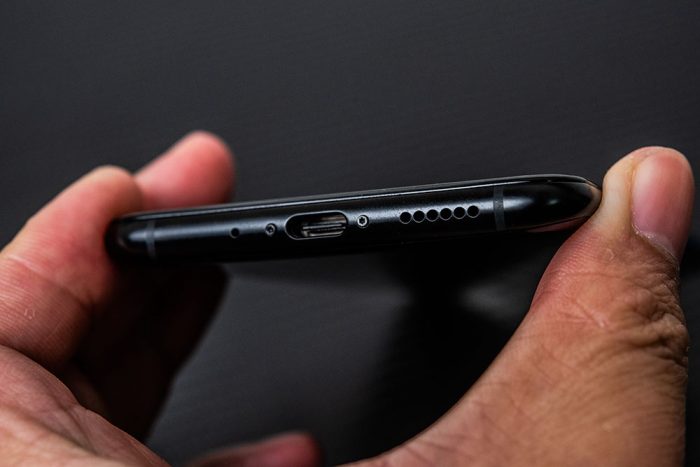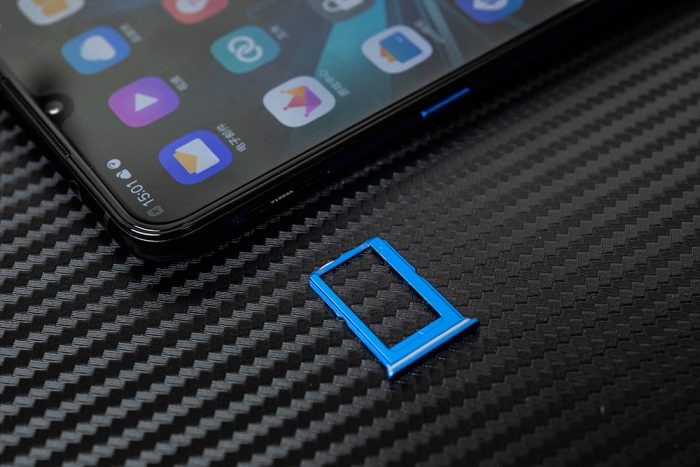On March 1, Vivo launched the Vivo iQOO. This phone has caught the public’s attention since its release. Both the iQOO and the Xiaomi Mi 9 are powered by the Snapdragon 855 processor, but the iQOO is more affordable. Today, we will take an in-depth look at its internal structure and workmanship.

The phone features a glass back cover. There is a screw on both sides of the USB port.

First, remove the SIM card tray.

Remove all the screws before separating the back cover from the phone body. The disassembly process is slightly difficult.

Now, the back cover has been removed. There is a cable connecting the phone body to the back cover.

There are several ribbon cables and some small components on its back cover. It is the most complex back cover I have ever seen.

The flex cable of the fingerprint module on the back cover is still connected to the motherboard. We need to remove the metal plate that secures the fingerprint flex cable in order to disconnect the cable from the motherboard.

Remove the metal plate and disconnect the fingerprint module cable.

Now, the back cover has been completely removed. The back cover is covered with a layer of graphite sticker.

The LED flash is connected to the motherboard via a cable.

There are two LED indicator lights at the end of the cable.

This phone also uses a classic three-section design, with the motherboard at the top, the battery in the middle, and the small circuit board at the bottom. Except for the iPhone, all mainstream phones use this design.

At the bottom of the phone, there is a speaker module, and below the speaker is the sub-board.

Remove the screws securing the speaker, then use tweezers to remove the speaker.

There is also a vibrator attached to the back of the speaker.

The sub-board integrates a USB port and several ribbon cable sockets.
There is a ribbon cable above the battery, which connects the main board and the sub-board.

The iQOO comes with a 4000mAh battery, which supports 44W fast charging.

Lift the green tape by hand to remove the battery.

Below the battery, there are also two yellow ribbon cables, as well as a heat-dissipating copper pipe.

The copper tube is relatively large, allowing the phone to achieve better heat dissipation.

The metal shields on the motherboard are covered with copper foil, which can improve heat dissipation performance.

This phone has a triple rear camera system, including a wide-angle lens, a main camera, and a depth lens.

Remove the mounting bracket of the camera module.

Thermal paste is also applied to the back of the motherboard.

After removing the metal shield, we found a chip coated with thermal paste.

This smartphone is powered by the Qualcomm Snapdragon 855 processor and uses a dual-layer packaging process. The CPU is on the top layer, while the memory chip is on the bottom layer.

This is a close-up of the 128GB storage chip.

It also features a 12MP front camera.

The phone comes with a 12MP main camera, a 13MP wide-angle camera, and a 2MP camera.
Summary

We found that the iQOO phone uses high-quality materials. The copper pipes effectively enhance CPU cooling performance, and the phone also has a reasonable internal structure. Overall, the iQOO is an affordable smartphone.
I accidentally inserted a SIM eject tool into one of my IQOO phones. Based on this teardown, can you tell me if the mic or anything else was damaged?